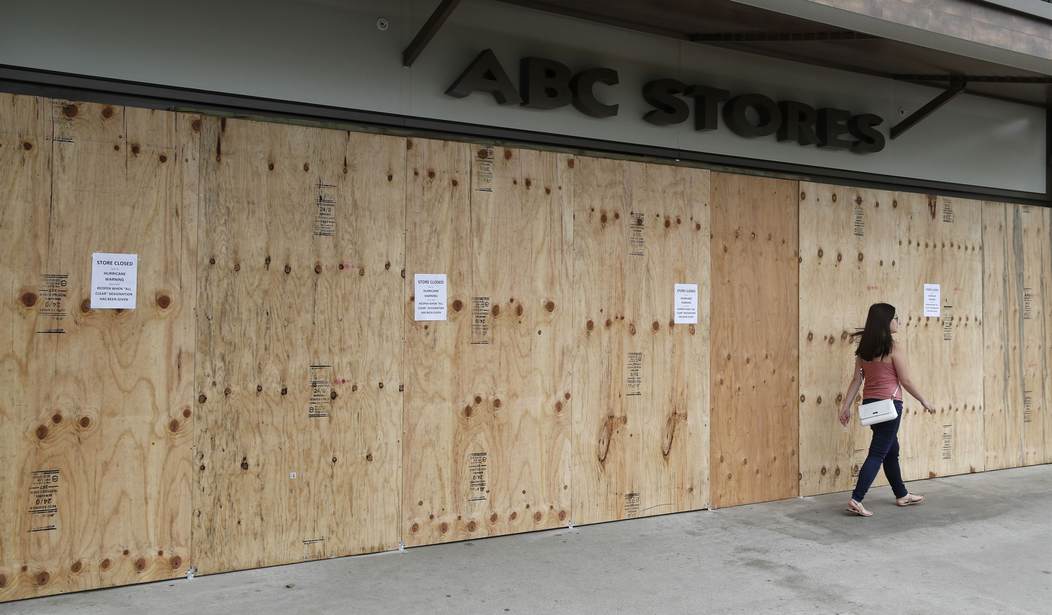We all know that prominent coastal Blue cities are in deep trouble, but this report in the Wall Street Journal reminds us that almost all large cities are run by idiots driven by Democrat ideology.
Democrat ideology is toxic. In cities across America a doom loop has set in.
The failure of another Democrat city: the office district is empty, with boarded up towers, copper thieves and failing retail and small businesses shut down. The city is desperately trying to reverse the ‘doom loop.’https://t.co/QCaMv2qm7M
— The Rule 5 Texan (@Rule5Tweets) April 10, 2024
Saint Louis, it seems, is seeing its central business district die a slow and painful death. Office buildings have been clearing out, and with them the businesses that supported the workers have been leaving to set up in greener pastures.
The Railway Exchange Building was the heart of downtown St. Louis for a century. Every day, locals crowded into the sprawling, ornate 21-story office building to go to work, shop at the department store that filled its lower floors or dine on the famous French onion soup at its restaurant.
Today, the building sits empty, with many of its windows boarded up. A fire broke out last year, which authorities suspect was the work of copper thieves. Police and firefighters send in occasional raids to search for missing people or to roust squatters. A search dog died during one of the raids last year when it fell through an open window.
“It’s a very dangerous place,” said Dennis Jenkerson, the St. Louis Fire Department chief.
It anchors a neighborhood with deserted sidewalks sprinkled with broken glass and tiny pieces of copper pipes left behind by scavengers. Signs suggest visitors should “park in well-lit areas.” Nearby, the city’s largest office building—the 44-story
AT&T Tower, now empty—recently sold for around $3.5 million.
Once the doom loop sets in, it is very difficult to reverse. Businesses leave, and the people follow them. As the people leave, more businesses close down. Rinse, repeat, and the city hollows out.
Larger coastal cities can tolerate a lot more ruin than cities like Saint Louis. New York is, well, New York. It has a huge concentration of money and power, plus a nearly infinite variety of things to do. Even in the depths of the 1970s New Yorkers hung on. Even after 9/11 they did. And not even Bill DeBlasio could destroy what makes the city unique.
San Francisco--a city that has fallen far indeed--has so much natural beauty and is surrounded by so much wealth that it has survived despite some of the grossest mismanagement of city resources you can imagine. The city has been harmed grievously, but it's hard to imagine a fatal blow.
Saint Louis and other midwestern cities--save Chicago--have much less cushion to absorb the damage, and it's not certain they will.
Cities such as San Francisco and Chicago are trying to save their downtown office districtsfrom spiraling into a doom loop. St. Louis is already trapped in one.
As offices sit empty, shops and restaurants close and abandoned buildings become voids that suck the life out of the streets around them. Locals often find boarded-up buildings depressing and empty sidewalks scary. So even fewer people commute downtown.
This self-reinforcing cycle accelerated in recent years as the pandemic emptied offices. St. Louis’s central business district had the steepest drop in foot traffic of 66 major North American cities between the start of the pandemic and last summer, according to the University of Toronto’s School of Cities.
With the decline in property values comes a corresponding decline in city revenues, exacerbating an already serious problem. When people and businesses leave, their taxes go with them, and without a sufficient tax base, city services inevitably suffer.
How big a drop in property values has come from the exodus?
The price for the AT&T Tower, three blocks from the Railway Exchange, was a sliver of the $205 million it sold for in 2006. Its value has been falling for years. In 2022, it changed hands for just $4 million.
Saint Louis is rotting from the center outwards. I have seen this pattern in Detroit, essentially a donut hole of poverty amid a donut of prosperous activity. The region is prosperous while the city is not.
Empty streets have made the office district more dangerous. Drivers speeding on wide, mostly empty roads are a menace. In early 2023, a 17-year-old volleyball player from Tennessee lost both her legs after a car smashed into her. A barbecue joint’s smoker has a bullet hole. Local shops and restaurants pay for private security guards to walk the streets and some have installed security cameras flashing warning lights.
Simply put, there is no reason to go there, so nobody does but people with bad intentions. That makes the area even less attractive, and things get worse. Buildings deteriorate, making it even more expensive to refurbish them. Etc. etc.
Hence the name "doom loop."
Take the Chemical Building, a 128-year-old redbrick former office building a block from the Railway Exchange. Three times between 2006 and 2017 investors bought the building with plans to turn it into apartments. Each failed. One of the buyers put up a banner advertising “perfectly centered living with 1,2,3 & 4 bedroom residences starting at $170,000.”
That’s about all they did. The banner is still there today. The windows above the banner are boarded up. Others are broken or covered in graffiti. The building now has a new owner who wants to turn it into a hotel.
The Railway Exchange building’s owner, a Florida investment firm, bought the building in 2017 and announced grand plans to redevelop it into apartments and retail. The firm eventually stopped paying for security and defaulted on the mortgage. The city condemned the building last year.
A decade of rot has also made a conversion harder. Few shops and restaurants are left to attract future tenants. A 2016 water leak flooded the building’s basement. The mortgage lender still wants to get paid.
“It’s a mess. They’ve ripped through the walls trying to find copper,” said developer Amos Harris, who is eyeing a conversion of the property and was recently inside. The building is much too big, the downtown apartment market too weak and construction too expensive to convert it without subsidies, he said.
As with so many things, COVID-era policies made modest problems in cities immeasurably worse. It turns out that turning your business district into a ghost town for months or years ran the risk of turning it into a ghost town forever.
Who could have guessed?
As with so many policies pushed by Democrats, the unintended consequences of a solution have dwarfed the intended benefits, and of course those benefits themselves were a mirage. Lockdowns prevented no cases of COVID, but they sure did a number on both the cities and the people whose lives were devastated by horrendous policies.
They were warned, but they didn't listen. And I, unlike many of my conservative friends, experience no schadenfreude watching this play out.
America's cities matter, and watching them deteriorate is not only sad but frightening. America If you look at a slum you know that decline begets more decline, and America's cities are vital enough to our prosperity that the collateral damage may be substantial.
Unfortunately, if there is one lesson from the past 50 years, "urban renewal's" promises are rarely if ever matched by a reality of increased vitality. For every project that even minimally succeeds, many more fail. Some of the biggest eyesores in our country were built with the intention of renewing a city.
Can a doom loop be reversed, or are all the projects intended to do so merely more stripping of the city's resources?
I don't know, but likely the latter. There is a lot of flesh and fat to pick off the bones of a once-great city in its death throes.








Join the conversation as a VIP Member